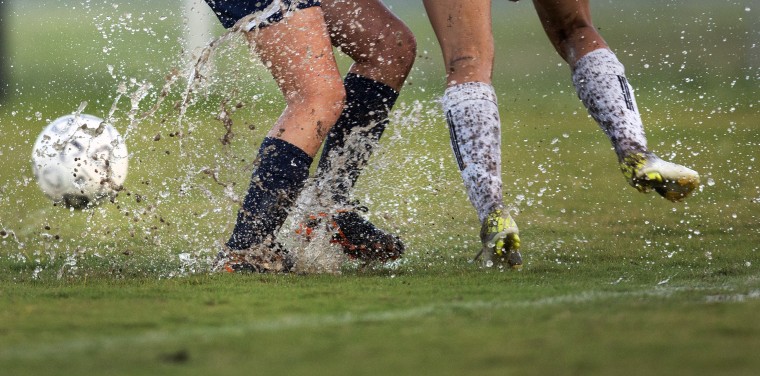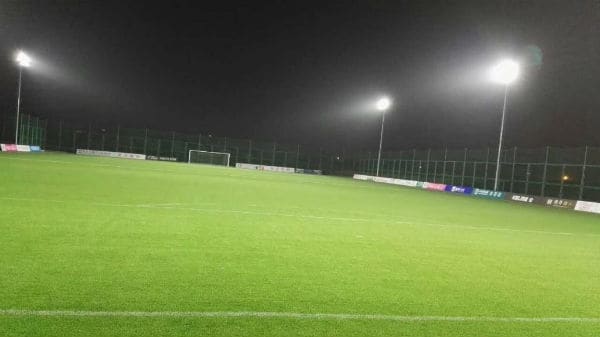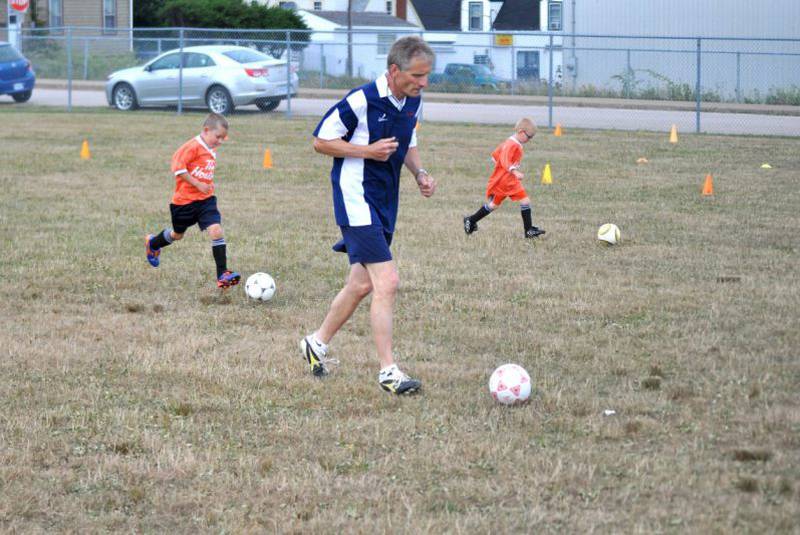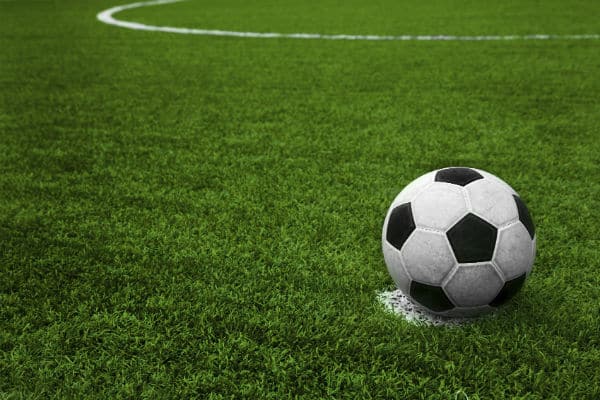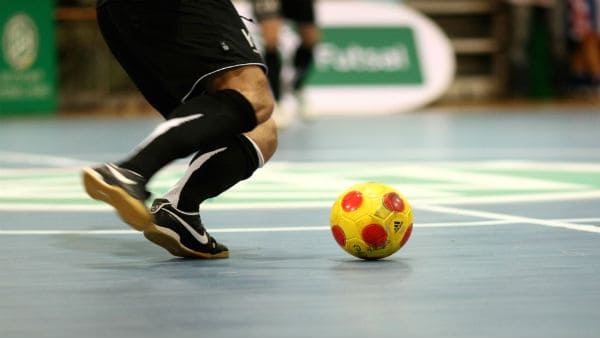I enjoy writing these articles for my readers, you guys. I don't accept payment for writing reviews, my opinion on products is my own, but if you find my recommendations helpful and you end up buying something through one of the links I may be able to receive a commission on that. More information
As a referee you absolutely need good football boots, but they partly have to meet different requirements than the shoes of a football player.
After all, as a referee you have to run the entire game, but you will not have any contact with the ball.
How do you choose the right pair of referee shoes? What things should you pay attention to? This is about buying football boots.
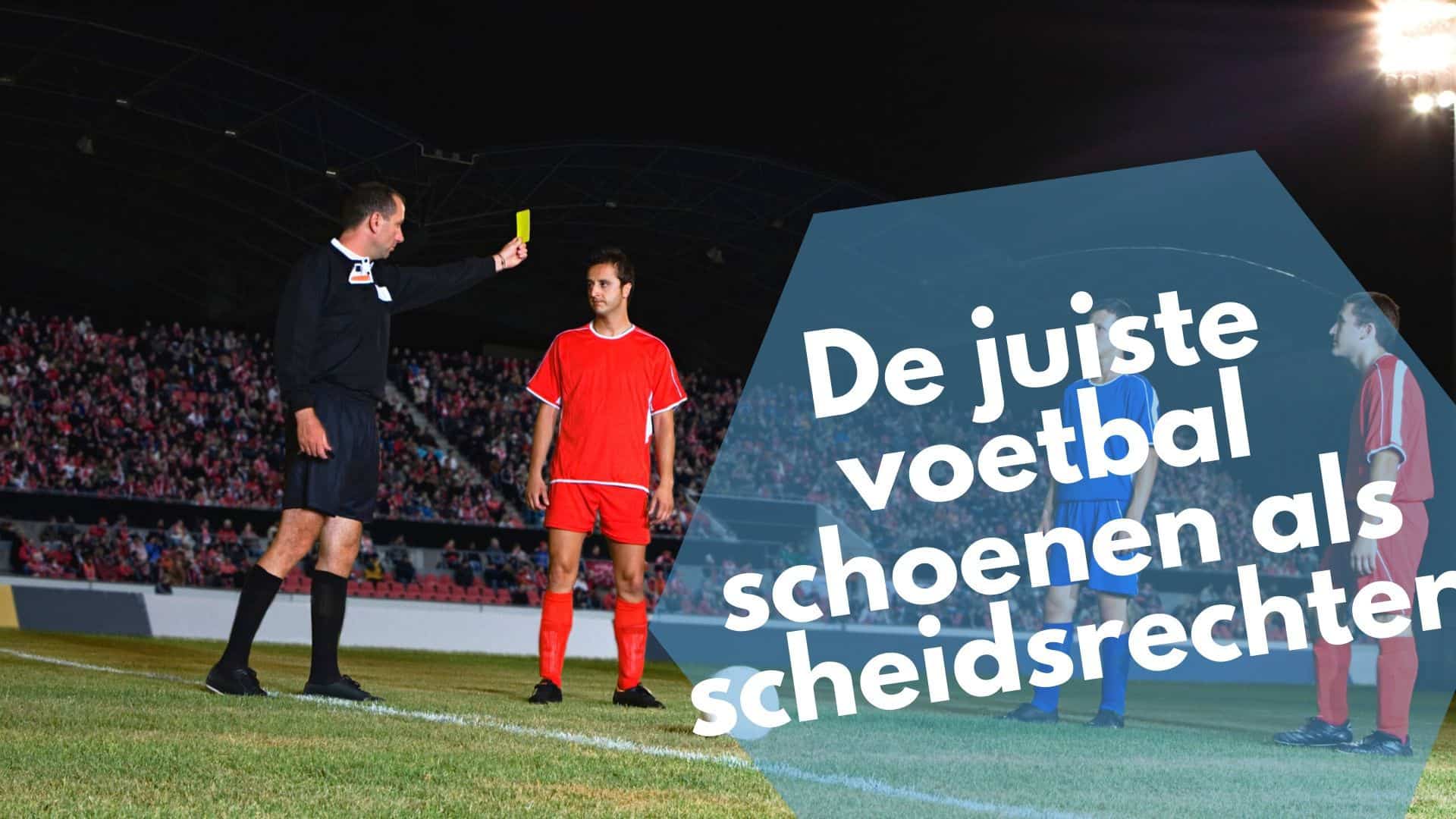
Good football boots are also indispensable for a referee. The arbiter also needs good football boots for both on the field and in the hall. I have my picks for different field types here.
As a referee you often come into contact with different types of surfaces and it is therefore wise to have at least some of these in the cupboard.
I've tried quite a few in my time, and these are my picks at the moment for different types of surfaces. Later in the piece I will also explain further why I choose this one.
| Field type | Images |
|---|---|
| Best for soft wet fields: Puma King Pro SG | 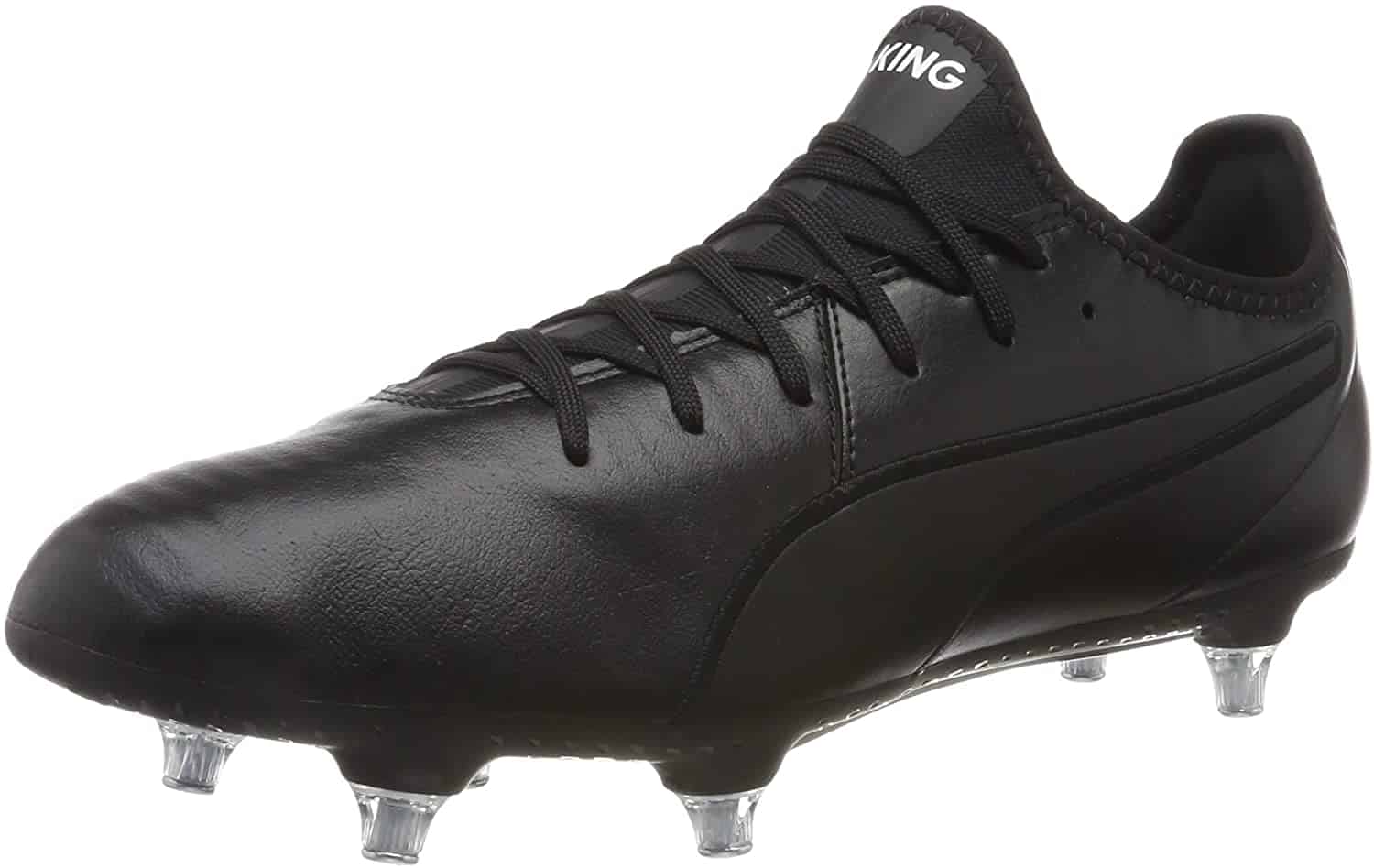
|
| Best for solid natural grass: Puma One 18.3 FG | 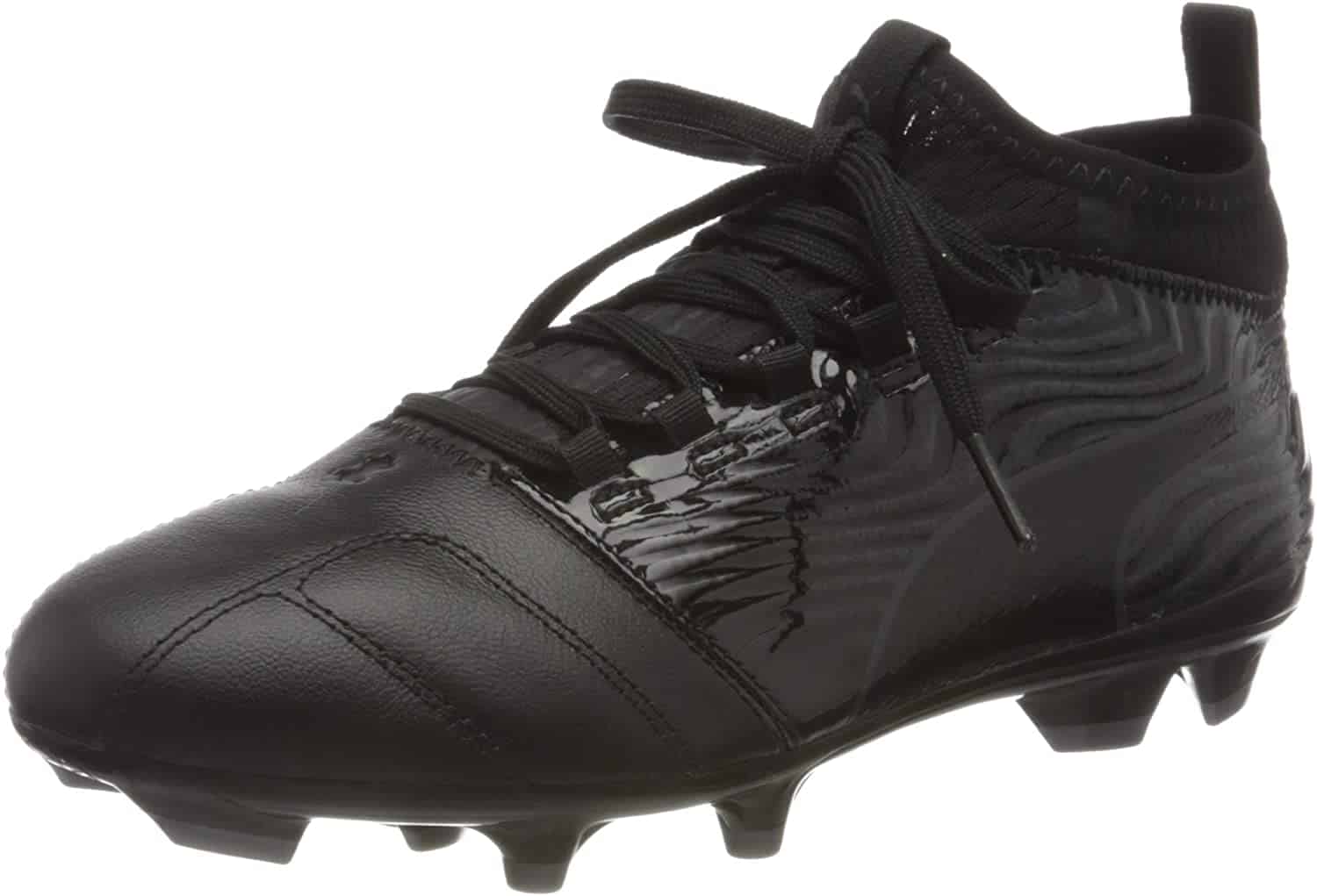
|
| Best for hard and dry playing fields: Adidas Predator 18.2 FG | 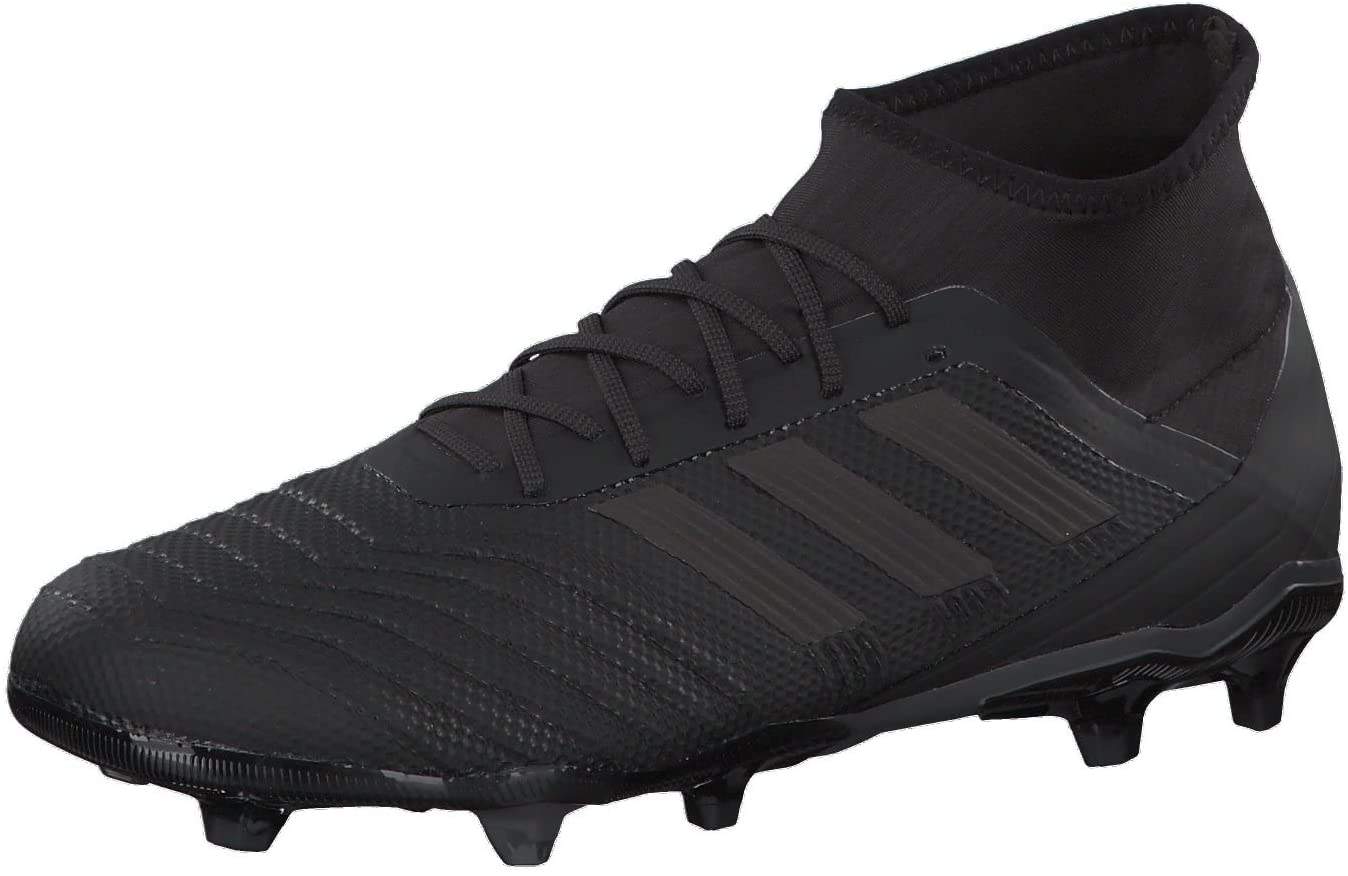
|
| Best for artificial grass: Nike Hypervenom Phelon 3 AG | 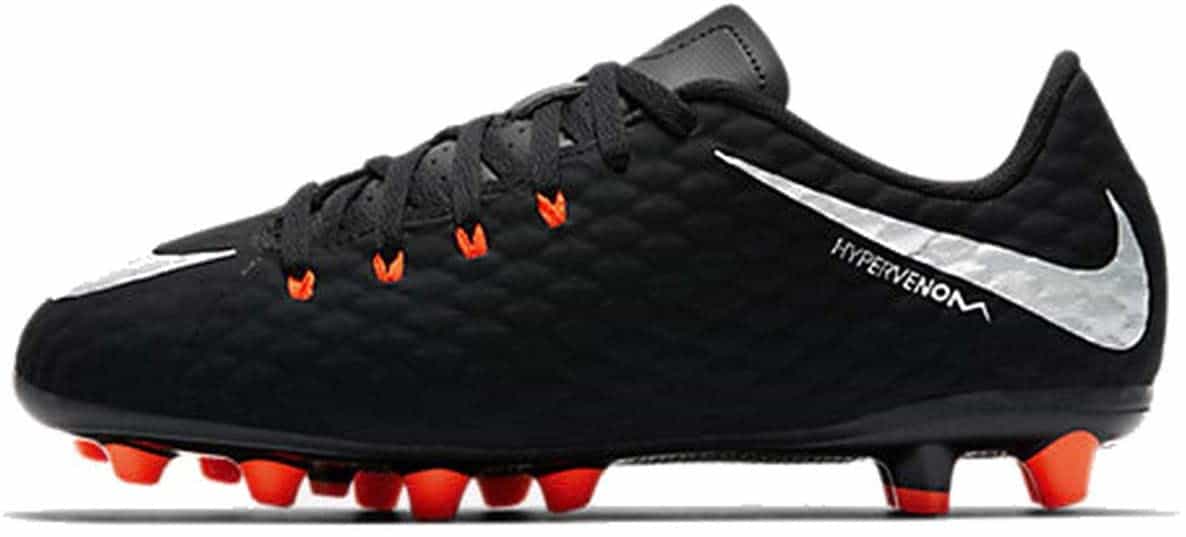
|
| Best for futsal: Adidas Predator Tango 18.3 | 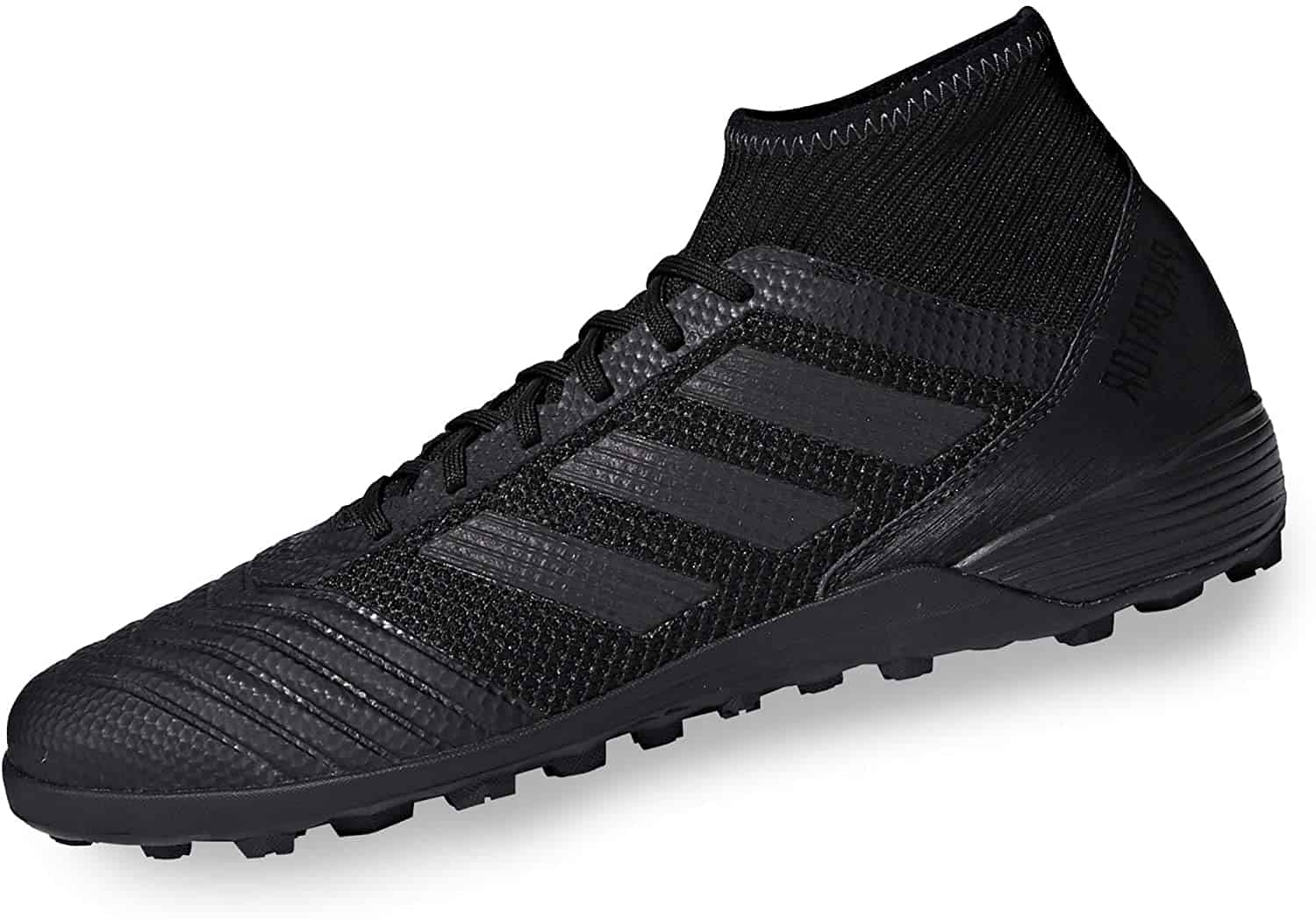
|
What we discuss in this comprehensive post:
- 1 What should you pay attention to when buying your referee shoes?
- 2 What type of playing field are you looking for?
- 3 Are they comfortable?
- 4 Do they have shock absorbing cushioning?
- 5 Do they provide enough support?
- 6 The first step: the field type
- 7 The second step: material
- 8 The third step: comfort
- 9 The fourth step: support
- 10 Conclusion
What should you pay attention to when buying your referee shoes?
Of course you won't have to shoot. All the techniques that are nowadays ingrained in the nose of the shoes can be omitted. Instead, you can focus on other aspects of the shoes.
When buying your football referee shoes you should pay attention to:
- what type of playing field are they for
- are they comfortable
- do they have shock absorbing cushioning for the heel
- do they provide sufficient support to your Achilles tendon with a hardened heel
When you take all these things into account in your decision, you will certainly make the best choice. You will soon have to run back and forth on the field for a few meters, the referee has to be with everything!
Let's first look at the different field types.
What type of playing field are you looking for?
The right footwear is extremely important no matter what sport you play. But because football is played on so many different surfaces, having a shoe with the right traction for the type of pitch can greatly improve your personal performance.
The market today is awash with so many different options. How do you choose the right shoe?
Here I have some explanation about the type of surface and then the best choice of referee shoe that you could choose for practicing your profession.
It's not necessary, of course, but I bought a separate shoe for each field type.
Soft wet fields – swampy ground
When it's wet and rainy, you don't want to slide flat on the ground and lose your grip. This is when you have to choose a pair of SG shoes or “Soft Ground”. This variant usually has a 6-stud design with 2 in the rear and 4 in the front, although some manufacturers sometimes add some molded studs for even more traction.
The replaceable aluminum studs are longer and really dig in the mud to ensure you stay upright. Please note: these shoes are not suitable for any other surface! So I don't use mine every weekend, so they last a long time.
I myself have for a soggy field this Puma King Pro SG chosen:

Fixed natural grass
There is no better surface in the world to play on than a new, freshly cut and sprinkled natural grass pitch. I'm referring to the kind that allows players to really ping and move the ball around without bare, sun-kissed spots giving you trouble. Think Old Trafford or the Neu Camp.
Specially designed for this surface is the FG collection of shoes. This is what most players automatically buy without realizing it, especially for beginners. In any case, the basic set of referee shoes that you definitely want to have in your closet.
The configuration can consist of conical studs, cast studs, or a combination of both.
They are the mid-range stepping stone that can be used on other surfaces without much trouble, but they are perfectly suited to the field with beautiful, lush grass.
These are the shoes I use by far the most for whistling my matches.
I chose the Puma One 18.3 FG here, the variant with the yellow Puma stripe to match my shirt. Nice detail, but of course not necessary.
You have them at Amazon and you you can check the price there:

Hard and dry playing fields
For those players who play in hot, sunny conditions, where water and sprinkler systems don't seem to exist on pitches, you'll need a pair of HG boots or an old-fashioned pair of "Mouldies".
Especially in amateur football you often come across fields that are not perfectly maintained and on a warm pre-summer day this can sometimes cause problems.
Basically, these are referee shoes with lower profiles and let you stand closer to the ground. They also have conical studs in huge quantities.
The best example of a shoe in this category is the Adidas Copa Mundial, which has a total of 12 studs. But in the Netherlands it is not necessary to buy a special pair for it.
Dividing pressure does provide better traction when the field is hard and gives less.
If I know that I have to whistle on these kinds of fields I take my Adidas Predator 18.2 FG shoes with it.
Slightly more expensive than the Puma Future, but they offer a lot more support at the ankle so that you are well protected in the event of a misstep on the hard surface:

Artificial grass
As the game grows around the world, more and more pitches are switching to synthetic turf, mainly because it offers a consistent surface all year round with little maintenance.
Recently we have even come so far that the best natural grass fields can already be imitated quite a bit.
Football brands have begun to adapt to this switch, creating their own unique sole configurations to match the artificial grass surface.
For example, Nike has its own AG soleplate that has received a lot of critical acclaim and positive reviews. If you can find an AG, they are worth testing.
But realistically, you can easily wear an FG soleplate with little to no problems.
I've read several comments from critics who say the FG configuration gets stuck in the turf surfaces and causes ankle injuries, but I don't believe any of this.
I've been playing on artificial grass with FG boots for several years and never encountered such problems.
Still, if you get a little more serious about whistling, you'll see that you can use every back support, and the best grip for the ground can make a big difference to the effort you have to put in moving around the pitch.
That's why I got the a while back Buy Nike Hypervenom Phelon 3 AG, with dynamic fit. Nice fit and offer good support:

Futsal
When you play on indoor surfaces, there is only one way to whistle – with indoor shoes.
Okay, that won't be a surprise. Recognizing the shoes is very easy, stick to shoes that indicate IN at the end of the title.
Each brand develops its own style of the soleplate and you see different types emerging. It will be a case that suits you best and for the most part they will all provide an equal level of performance.
The fit and support are at indoor football shoes very important, also for maneuverability as a referee.
That's why I chose the Adidas Predator Tango 18.3 futsal shoes. Indoor Core black, of course not to contrast with the rest of the outfit:

Are they comfortable?
Shoes are made for a specific purpose and have since evolved to the point where they focus on the best comfort for that task down to the last detail. For example, shoes are made for:
- Control – designed using elements around the nose and control zone, helps players when it comes to ensuring quick control and solid passing
- Kracht – provides players with an extra dose of oomph when taking a shot, usually in the form of technology throughout the toe of the shoe
- Speed – all about producing a lightweight shoe, usually includes a synthetic upper and a very minimal overall design
- Hybrid: – a shoe that seems to combine different styles, such as speed and comfort. This will be a lightweight variant with added technology to the nose
- Classical – focused on providing a no-nonsense end product that is comfortable and durable. Less technology, more leather!
Since as a referee you will not be making shots at the goal, you can mainly focus your choice on either speed, so a lightweight shoe, or classic.
Lightweight means less durability
Just a note here, the current trend in the market is light shoes and we see manufacturers moving towards lighter and lighter. This means that fewer materials are used and that the durability is affected.
In the past, a good boot could easily provide a player with a solid two seasons, but we are now at the stage where a single season seems to be an achievement. Fortunately for umpires this is a little different as you use them differently. Less ball contact and especially less player contact.
This ensures that divorce can be a good alternative for us.
Figure out your foot shape
One thing many new refs don't know is that just about every shoe on the market has a different fit. Even if you look at the variants of one brand, you will see that they have intentionally adapted each variant in a different way for different types of people.
This is also the reason that you sometimes have to buy two sizes larger than you are used to with regular shoes.
I actually recommend getting at least one size bigger when buying online, and maybe even two if you've been disappointed before. Buy them well in advance so that you do not have to find out on the day before the competition that you have received too small shoes!
This is where the rule of thumb comes in. If you have a thumb space between your toes and the top of the leather, they are too big. If you don't have space, they are too small. The correct distance is about a width of your little finger between your toe and the top of the leather. If you feel your toe pressing against the top, they are definitely too tight.
One of the most common mistakes people make is to keep wearing a pair that isn't the right size. Don't fall for it.
Let's face it, we've all bought a few, opened them up and tried them on at home, thought they were a bit too small and decided to try them out "just in case they fit". Unfortunately, they probably won't do that leaving you with a used pair of football boots.
Listen to your first feeling and make sure you have some extra space in the front of the shoe, that your toes are not pressed heavily against the front of the shoe and that your ankle is not fully pressed against the heel when you put them in front of the shoe. wears for the first time. If you can find a fit that doesn't constrict any part of your feet, you're in the right direction for blister-free play.
Another tip for people who never seem to find a good fit in the front because they have a wide foot. In that case, look for models with a natural leather upper. Using a K-leather boot allows for some stretch space.
And a quick tip for people who have a pair that are too tight. Don't throw them away, but first try holding them in warm water for another 15 minutes while wearing them. It will loosen up the stitching and allow some extra stretch. That way they might eventually be able to fit in and it hasn't been a waste of money.
Do they have shock absorbing cushioning?
New football boot designs now also focus on safety and comfort. As the game moves away from the heavy, chunky football boot and from a more physical game to more skill and speed, the design is really moving away from security and more towards comfort and streamline function.
Two key features, the sole and the surrounding structure, contribute significantly to the overall comfort and safety of the modern football boot.
As the interface between the foot and the ground, the sole of the foot's function is to protect the foot and maintain the comfort of the player and referee by absorbing shock from repeated impacts with the playing surface.
As a result, you now see more and more manufacturers with cushions in the side of the shoe. This cushioning resembles the typical shock-absorbing material used in running and sports shoes. However, in these shoes it is designed on a small scale to be more weight efficient.
Do they provide enough support?
Just as a good ballet shoe supports the dancer, the structure of the football shoe supports the referee. The sealed shell provides protection in critical locations.
The heel counter at the back of the shoe helps secure the heel and lock the foot in place.
Unlike running shoes with padded heel funnels on the inside, a good football boot has an external heel counter that provides more rigid support with improved fitness and impact protection for the heel.
The asymmetrical lacing system also removed pressure from the laces at the top of the mid-foot, which is more sensitive than the less vulnerable side of the foot.
On the most comfortable models, the midsole of the sole features a compressed foam material specifically designed for shock absorption and pressure distribution, and the heel of the sole features an air-filled hem that provides lightweight additional cushioning.
The shoe also has support bars that run from the front to the back of the shoe. This structural reinforcement provides great strength and stability during bending.
You want a sturdy yet light shoe as a referee, and I hope this article has helped you in your choice.
The first step: the field type
Different football field surfaces also require different types of football boots.
There are various types of surfaces and most football boots are indicated by one of the following abbreviations:
- Artificial grass (AG: artificial ground)
- Firm ground (FG: firm ground)
- Hard ground (HG: hard ground)
- Soft fields (SG: soft ground)
- Hard fields (TF: turf/astroturf)
- Multi ground (MG: multi ground)
- Indoor courts (IC: indoor courts/IN: indoor)
More and more matches are played on artificial grass. Artificial grass requires much less maintenance and has a good surface all year round. A football shoe that is suitable for artificial grass is often indicated with "AG".
Characteristic of this type of shoe is that the durability is increased and the pressure is distributed over the foot. The shoes often have multiple and smaller studs.
“FG” is used for shoes that are suitable for hard/normal ground surfaces. The football boots that are suitable for this have studs that are smaller and shorter than the studs on shoes that are suitable for natural fields with a soft or wet ground (“SG”).
The wet, soft pitches call for longer studs that are spaced a little further apart to improve grip.
Shoes marked with “TF” are suitable for artificial grass and hard pitches. These are often fields with gravel or the like. Shoes with high studs do not provide extra grip on hard surfaces like this.
The shoes often have small studs to prevent slipping and to keep the field in better condition.
“MG” shoes are suitable for multiple surfaces, but definitely not on wet fields because there is a good chance that you will not have enough grip on the slippery grass with the small studs under the shoes.
Still other shoes have the designation “IC”. These shoes are for indoor football and are completely smooth on the bottom. They provide adequate cushioning and the soles are designed so that they do not leave marks on the pitch.
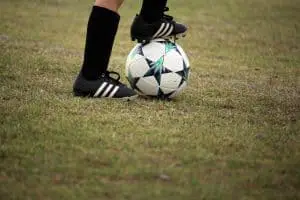
Photo by Hal Gatewood
The second step: material
After you have looked at the type of surface on which you often have to play/whistle, it is important to make a choice in the type of material of the shoe. You can choose between a shoe made of leather or plastic.
Leather shoes mold better to your feet, often last longer and breathe better. They must be kept clean. So you will lose some time on this. They also retain more moisture.
Synthetic shoes can withstand all weather conditions, from strong sun to heavy showers. They also require less maintenance than leather shoes. They do not breathe well, which means they can give off bad odors.
The third step: comfort
It is important that a referee shoe is comfortable and helps to cover large distances.
Football boots are designed with focus to support different areas of the foot.
Think carefully about what is important to you, where your shoes should support you, so that you run really comfortably on the field.
For example, football boots are designed to focus on control and assist in making precise passes. You don't need this as a referee. What you benefit from as a referee is a lightweight shoe that makes it easier for you to make speed.
A heavy shoe causes too much deceleration, which does not help when running. A lightweight shoe offers a referee the most comfort.
Also read: what equipment do you need for football training?
The fourth step: support
It is important that the shoes support you well during the competition. A sturdy sole is important, but the rest of your shoe must also provide good support. For example, a good heel counter helps to keep the foot in place and to provide good support for the Achilles tendon.
Shock-absorbing cushioning is also necessary. If you don't have enough support, your feet will soon start to hurt.
And if you keep running for too long in shoes with poor support, you can also hurt your back. This stands in the way of a long refereeing career!
Conclusion
When choosing referee shoes you should pay attention to the field type, the material of the shoes, the comfort and the support.
If you are active on different surfaces, it may be a better choice to purchase different pairs of football boots.
In any case, take the time to read carefully which shoe(s) is/are most suitable for you.
We hope this blog has helped you to make the right choice to buy the right football boots!
Also read: the best football shin guards


